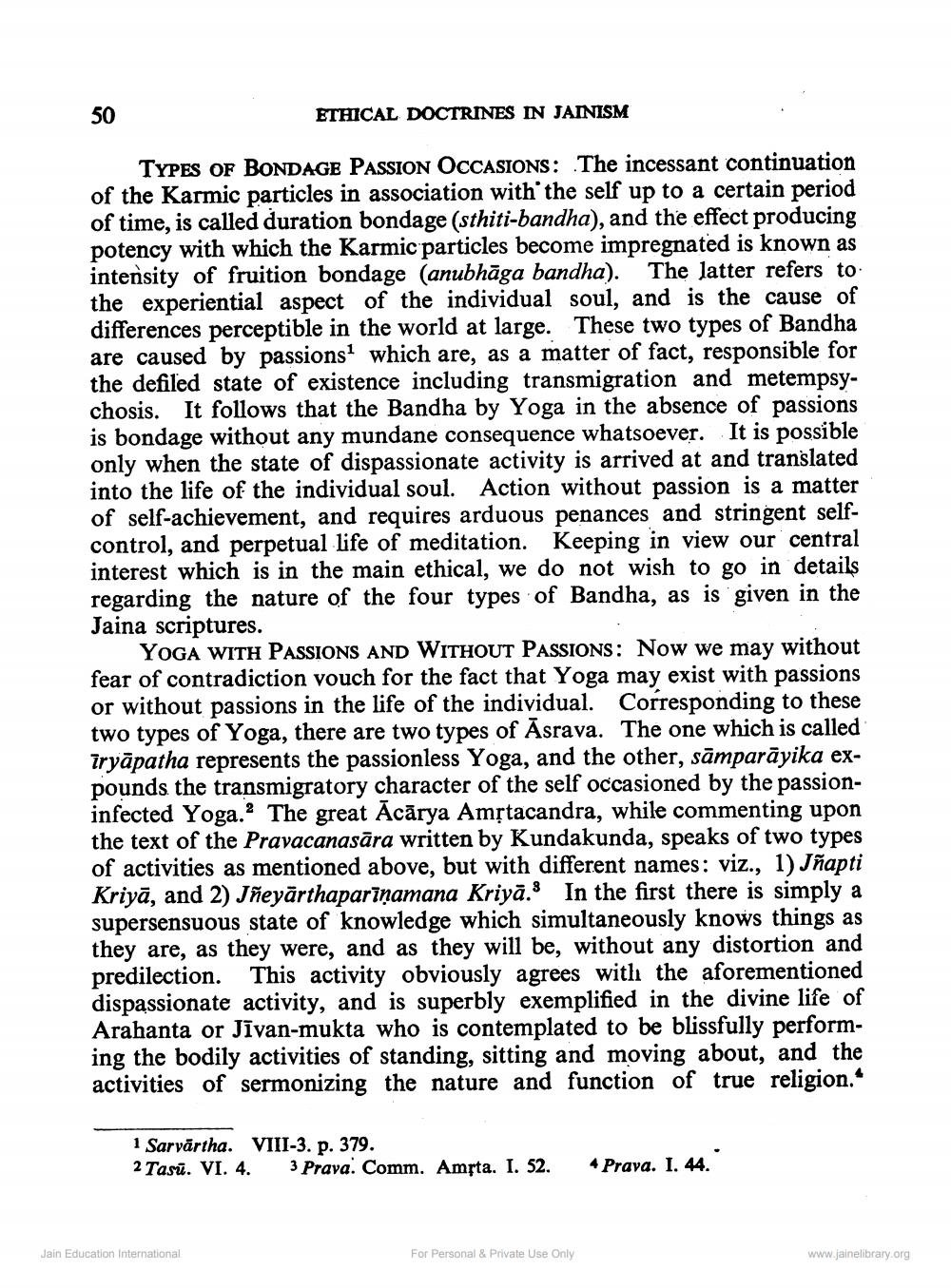________________
50
ETHICAL DOCTRINES IN JAINISM
TYPES OF BONDAGE PASSION OCCASIONS: The incessant continuation of the Karmic particles in association with the self up to a certain period of time, is called duration bondage (sthiti-bandha), and the effect p potency with which the Karmic particles become impregnated is known as intensity of fruition bondage (anubhāga bandha). The latter refers to the experiential aspect of the individual soul, and is the cause of differences perceptible in the world at large. These two types of Bandha are caused by passions which are, as a matter of fact, responsible for the defiled state of existence including transmigration and metempsychosis. It follows that the Bandha by Yoga in the absence of passions is bondage without any mundane consequence whatsoever. It is possible only when the state of dispassionate activity is arrived at and translated into the life of the individual soul. Action without passion is a matter of self-achievement, and requires arduous penances and stringent selfcontrol, and perpetual life of meditation. Keeping in view our central interest which is in the main ethical, we do not wish to go in details regarding the nature of the four types of Bandha, as is given in the Jaina scriptures.
YOGA WITH PASSIONS AND WITHOUT PASSIONS: Now we may without fear of contradiction vouch for the fact that Yoga may exist with passions or without passions in the life of the individual. Corresponding to these two types of Yoga, there are two types of Āsrava. The one which is called īryāpatha represents the passionless Yoga, and the other, sämparāyika expounds the transmigratory character of the self occasioned by the passioninfected Yoga.The great Ācārya Amrtacandra, while commenting upon the text of the Pravacanasāra written by Kundakunda, speaks of two types of activities as mentioned above, but with different names: viz., 1) Jñapti Kriyā, and 2) Jñeyārthaparīnamana Kriyā. In the first there is simply a supersensuous state of knowledge which simultaneously knows things as they are, as they were, and as they will be, without any distortion and predilection. This activity obviously agrees with the aforementioned dispassionate activity, and is superbly exemplified in the divine life of Arahanta or Jīvan-mukta who is contemplated to be blissfully performing the bodily activities of standing, sitting and moving about, and the activities of sermonizing the nature and function of true religion."
1 Sarvārtha. VIII-3. p. 379. 2 Tasū. VI. 4. 3 Prava. Comm. Amsta. I. 52.
Prava. I. 44.
Jain Education International
For Personal & Private Use Only
www.jainelibrary.org




